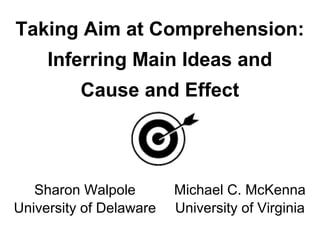The document discusses two important inferential comprehension skills: inferring main ideas and inferring cause-and-effect relationships. It outlines approaches for teaching students to infer main ideas, including having them identify the topic sentence, think aloud to reason their way to the main idea when there is no topic sentence, and start with lists of explicit facts or details in a paragraph to determine the main idea.





































































